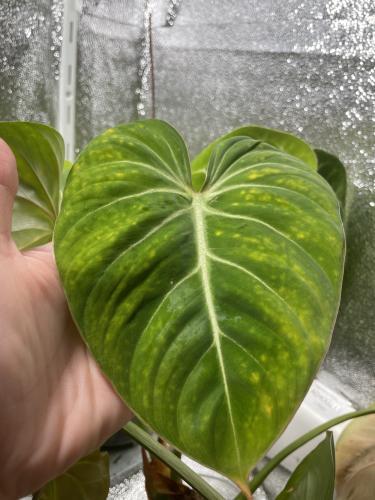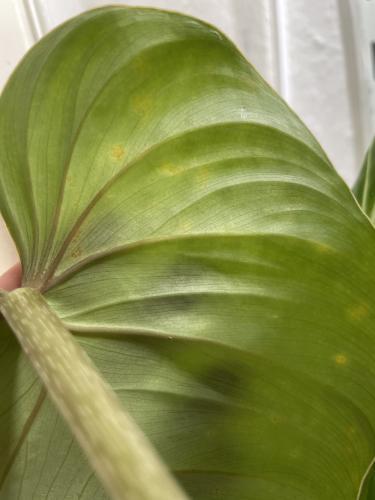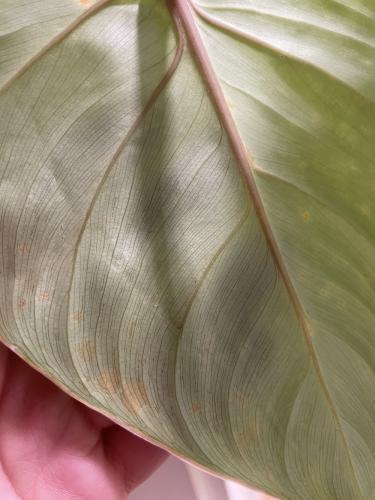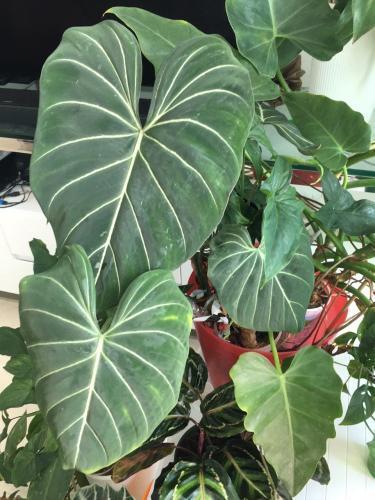So, this literally happened over the course of 2 days. On Sunday morning the plants were fine. However, the humidifier in this room malfunctioned on Sunday while I was not home for about 4-5 hours and I came home to find an empty humidifier and the plants were at 99% humidity. I immediately put up a couple of fans so that they could dry out faster. Another thing to mention is that this week, the temperatures here have been skyrocketing and at times the plants are at 35C (95F).
Since Tuesday I noticed that yellow spots have appeared on the leaves of ALL of the gloriosums. It is only on the gloriosums in this room (there are other philodendrons, anthuriums, etc in there as well) and no, they are not clustered together. There is a physical distance of at least 1m between some of the Gloriosums while others are closer to lets say an Anthurium than another Gloriosum. The yellow spots are on ALL of the leaves, except for the newly growing and unfurling leaves.
The plants are in a very well draining potting mix, humidity ranges between 55 to 70%. The temperatures were usually between 28-30C (82-86F) except for this week, as now it is just hot. I inspected them throughoutly and I just do not see any pests problems. Based on google search, some other person had thrips with the same signs but I just do not see them and I have had last year a thrips problem in another room, so I know what thrips look like and the damage that they cause on a monstera, unsure how they affect the leaves of a gloriosum.
Photos of the yellow spots and the backside of the leaves:





Does anyone have any idea what might be going on? Maybe
@Gina1960? I am completely baffled, so any thoughts are much much appreciated. Thank you in advance!






